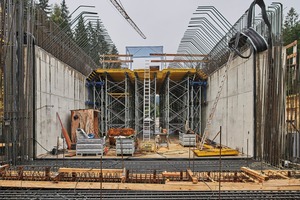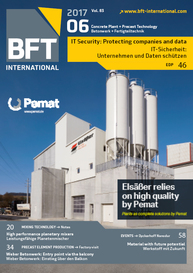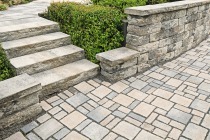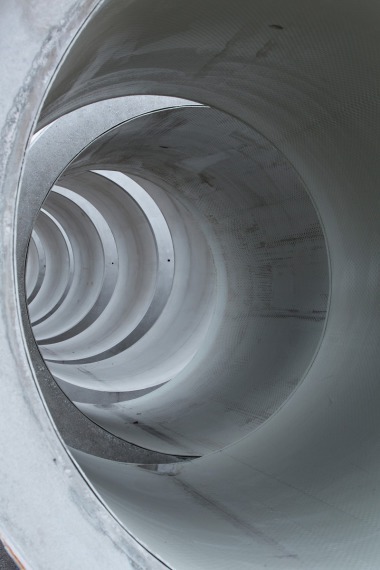Optablue for low-cracking massive concrete elements
Many civil engineering structures consist of massive concrete elements. Special requirements are placed on the concrete used for these elements to ensure the duration of their effectiveness and serviceability. With the special Optablue cement from Opterra, thanks to its combination of specific properties, it is much easier to satisfy all relevant requirements.
Massive structural concrete members are especially effective in meeting performance requirements. For many of the concrete types used there, low cracking tendency is specified in many cases. At the same time, the construction material must exhibit high density and durability. For mix designs in such concretes with a demanding requirement profile, Opterra has developed the special Optablue cement.
Good early strength and low alkali content
It’s especially coordinated composition of Portland cement clinker and ground granulated blast furnace slag enables Optablue to achieve good early strength. This makes it specifically well suited for concrete that must demonstrate high strength at an early age. Since a considerable amount of the clinker content of Optablue has been replaced with high-quality granulated blast furnace slag, the resulting special cement enables good subsequent hardening and, at the same time, high density and durability of the hardened concrete. Its low heat of hydration (LH = Low Heat) makes Optablue no less than ideal for the manufacture of massive structural members. This particularly results from the fact that the special cement greatly minimizes the tendency to cracking caused by the heat of hydration. Not least, the low effective alkali content also enables the use of Optablue with aggregate that is sensitive to alkali.
Optablue is manufactured with selected Portland cement clinker and granulated blast furnace slag. The special cement thus meets the requirements of a CEM III/A 42,5 N-LH(na) blast furnace cement in accordance with DIN EN 197-1 and DIN 1164-10. Optablue is thus suitable for use in hydraulic structures as specified in ZTV-W, civil engineering structures as per ZTV-ING, special underground and foundation structures – as well as for concrete, reinforced concrete, prestressed concrete in accordance with DIN EN 206-1 as stipulated in DIN 1045-2, and concrete in uses for compressive strength classes of ≥ C30/35.






